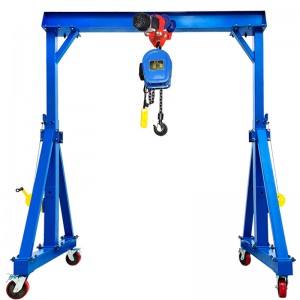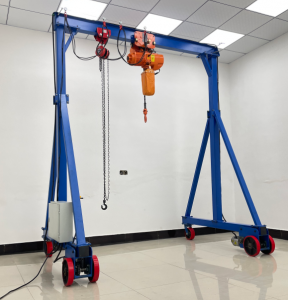There are several key factors that influence the selection of a mobile gantry crane's load capacity:
1, Load requirements:
1) The weight and size of the heaviest items that need to be lifted and moved are the primary considerations.
2) Accounting for the maximum weight of the loads, as well as any dynamic or shock loads, is important.
2, Lift height requirements:
1) The height that loads need to be lifted to, such as for loading/unloading trucks or stacking materials, affects the required crane capacity.
2) Taller lift heights typically necessitate cranes with higher load capacities.
3, Work area dimensions:
1) The available space and layout of the work area where the crane will operate impact the optimal crane size and capacity.
2) Larger span and higher lift heights generally call for higher capacity cranes.
4, Frequency and duty cycle:
1) If the crane will be used for high-frequency or heavy-duty applications, a higher capacity model may be warranted.
2) Lighter-duty, less frequent usage may allow for a lower capacity crane.
5, Safety factors:
1) Cranes are typically sized with safety factors of 2-3 times the maximum expected load to account for unexpected situations.
2) This ensures adequate capacity to handle potential overloads or dynamic stresses.
6, Future needs:
Selecting a crane with a slightly higher capacity than currently required can provide flexibility for future needs and changes.
By carefully evaluating these key factors, the appropriate mobile gantry crane capacity can be determined to match the specific requirements of the application. This ensures safe and efficient material handling while providing the necessary lifting capability.
Post time: Sep-29-2024






